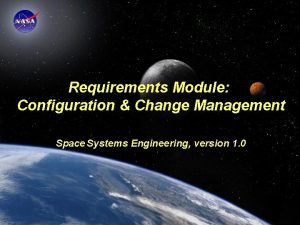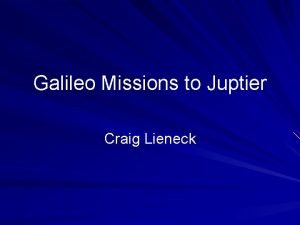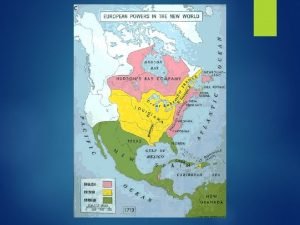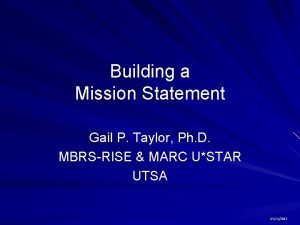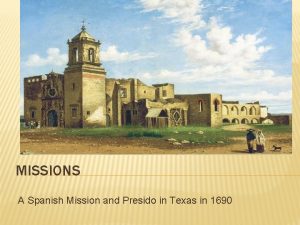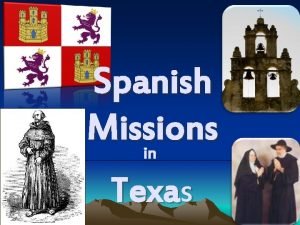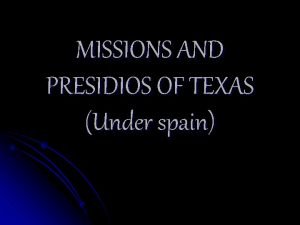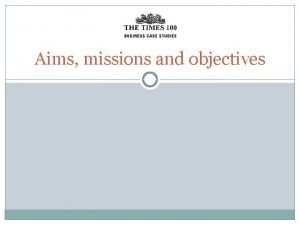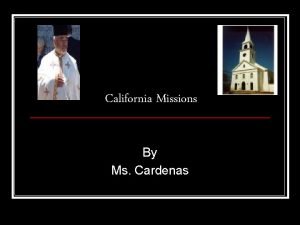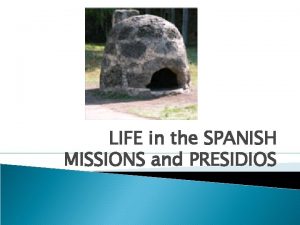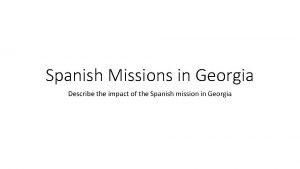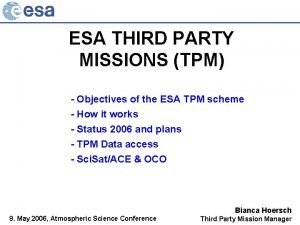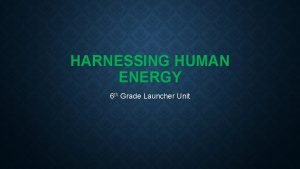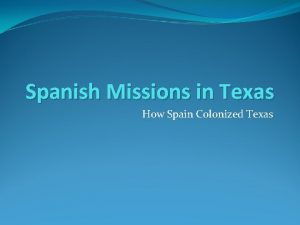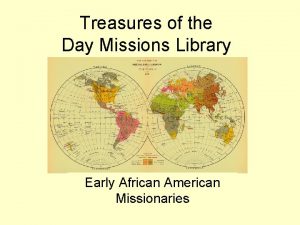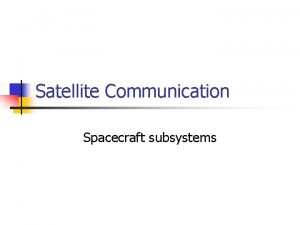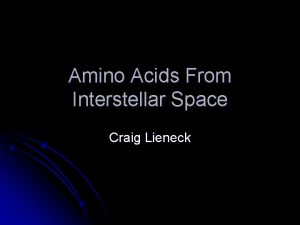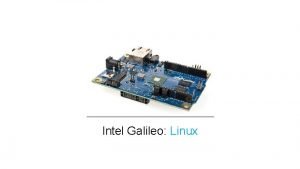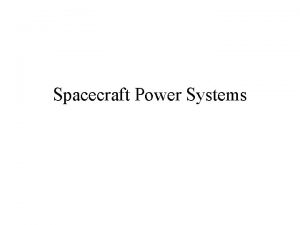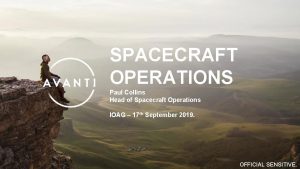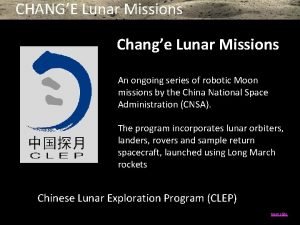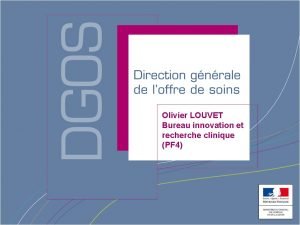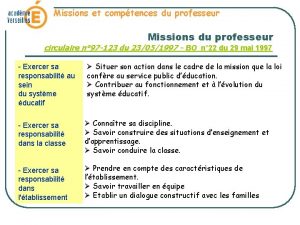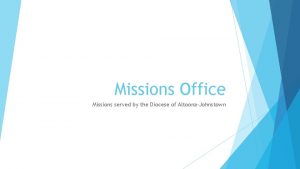Galileo Missions to Juptier Craig Lieneck Galileo Spacecraft





















- Slides: 21

Galileo Missions to Juptier Craig Lieneck

Galileo Spacecraft One of the most complex robotic spacecraft ever flown. Consists of two spacecrafts: – Orbiter: On-orbit mass: 2380 Kg Power System: Radioisotope Thermal Generators (RTGs) – Atmospheric Probe: On-orbit mass: 335 Kg Power System: Storage batteries of 580 W

Mission Goals - Probe Determine the chemical composition of the Jovian atmosphere. Characterize the structure of the atmosphere to a depth of at least 10 bars. Investigate the nature of cloud particles and the location and structure of cloud layers. Examine the Jovian radiative heat balance. Study the nature of Jovian lightning activity. Measure the flux of energetic charged particles down to the top of the atmosphere.

Mission Goals - Orbiter Investigate the circulation and dynamics of the Jovian atmosphere. Study the interaction of the Jovian magnetosphere with the Galilean satellites. Characterize the morphology, geology, and physical state of the Galilean satellites. Investigate the composition and distribution of surface minerals on the Galilean satellites. Determine the gravitational and magnetic fields and dynamic properties of the Galilean satellites. Study the atmospheres, ionospheres, and extended gas clouds of the Galilean satellites.

Initial Setbacks Initial Launch Plan: – – – May 1986. Carried on Space Shuttle to low-orbit. Centaur Rockets to Jupiter. Problems: – Challenger Disaster occurred in January, 1986. – Centaur Rockets forbidden on Space Shuttle.

The Solution VEEGA – “Venus-Earth-Gravity-Assist” – Galileo to use the gravity of Venus and Earth to boost to Jupiter. – Brought spacecraft closer than expected to sun. – Kept spacecraft in space longer than expected.

Liftoff Launched aboard Atlantis Space Shuttle on October 18, 1989.

Tracking Galileo Used Deep Space Network Series of large antennas equally around Earth.

Venus February 19, 1990 Galileo flies within 12, 000 km of Venus. Images gave new information about structure and dynamics of atmosphere.

Earth Flyby 1 December 8, 1990 Flew 960 km over Western Atlantic Ocean. 1000 pictures for an Earth-Rotation movie.

Asteroid Belt - 1 st Time October 29, 1991 Encountered Asteroid 951 Gaspra Photographed 60% of surface from 5000 km. Galileo came within 1600 km.

Earth Flyby 2 December 8, 1992 Came within 305 km. Scientists calibrated instruments one last time.

Asteroid Belt – 2 nd Time Encountered Asteroid Ida August 28, 2993 Twice the size of Gaspra. Surprise - Found small moon orbiting Ida (Dactyl).

Shoemaker/Levy-9 Galileo observes impact of S/L-9 into Jupiter in 7/94 23 fragments splash into Juptier. Galileo was 240 million km away.

Final Mission - Jupiter 7/13/95 – 7/27/95 – 10/9/95 – 10/11/95 – 12/7/95 – Atmospheric Probe released from spacecraft. Orbiter Deflection Manuver (ODM) Initial descent. Tape recorder troubles. Probe reaches Jupiter’s atmosphere.

Final Mission - Probe Entered atmosphere at 160, 000 mph. Deployed parachute and released heat sheild. 58 minute descent through 95 miles of Jovian atmosphere. Atmosphere drier than earlier predictions. Clouds and lightning observed in distance. Probe vaporized after encountering 450 mph winds.

Final Mission - Orbiter Originally planned 11 orbits. First 11 orbits designed for close-up pictures of moons. At same time, measurements made of Jupiter's magnetosphere.

Final Misson - Extended Mission extended for GEM – Galileo Europa Mission. – – – Observed fire, ice, and water on the moon Europa. Supported theory of underground ocean on Europa. Made way through Jupiter’s radiation to observe Lava fountain on Io. Missions would be extended two more times for further research. Io Europa Ganymede Callisto

Conclusion 9/21/03 - Galileo guided into Jupiter’s dense atmosphere, destroying the spacecraft. Done to avoid any impact with Galilean Satellites. Last signal: 12: 43: 14 PDT. Total Distance Traveled: 4, 631, 778, 000 km = about 2. 8 billion miles Major Accomplishments: – – First mission for long-term observation of Jovian system. Evidence of liquid layers of saltwater on Europa. Ganymede and Castillo volcanic activity. First observation of asteroid with moon.


References http: //www. jpl. nasa. gov/galileo/tourtoc. html http: //www. jpl. nasa. gov/galileo/index. html
 Spacecraft requirements management
Spacecraft requirements management Juptier.ed
Juptier.ed Free methodist world missions
Free methodist world missions Missions and presidios
Missions and presidios Covey mission statement builder
Covey mission statement builder Spanish missions in texas
Spanish missions in texas California missions map
California missions map Theology of missions
Theology of missions Why did the spanish build missions in texas?
Why did the spanish build missions in texas? Corpus christi de la isleta
Corpus christi de la isleta Aims missions
Aims missions California missions map
California missions map What were missions presidios and haciendas
What were missions presidios and haciendas Spanish missions in georgia
Spanish missions in georgia Esa tpm
Esa tpm How is kinetic energy used in rescue team missions
How is kinetic energy used in rescue team missions California mission names
California mission names Why did the spanish establish missions in texas
Why did the spanish establish missions in texas Mobile baptist association
Mobile baptist association Critical missions swat
Critical missions swat Day missions library
Day missions library Craig watson md phd
Craig watson md phd
